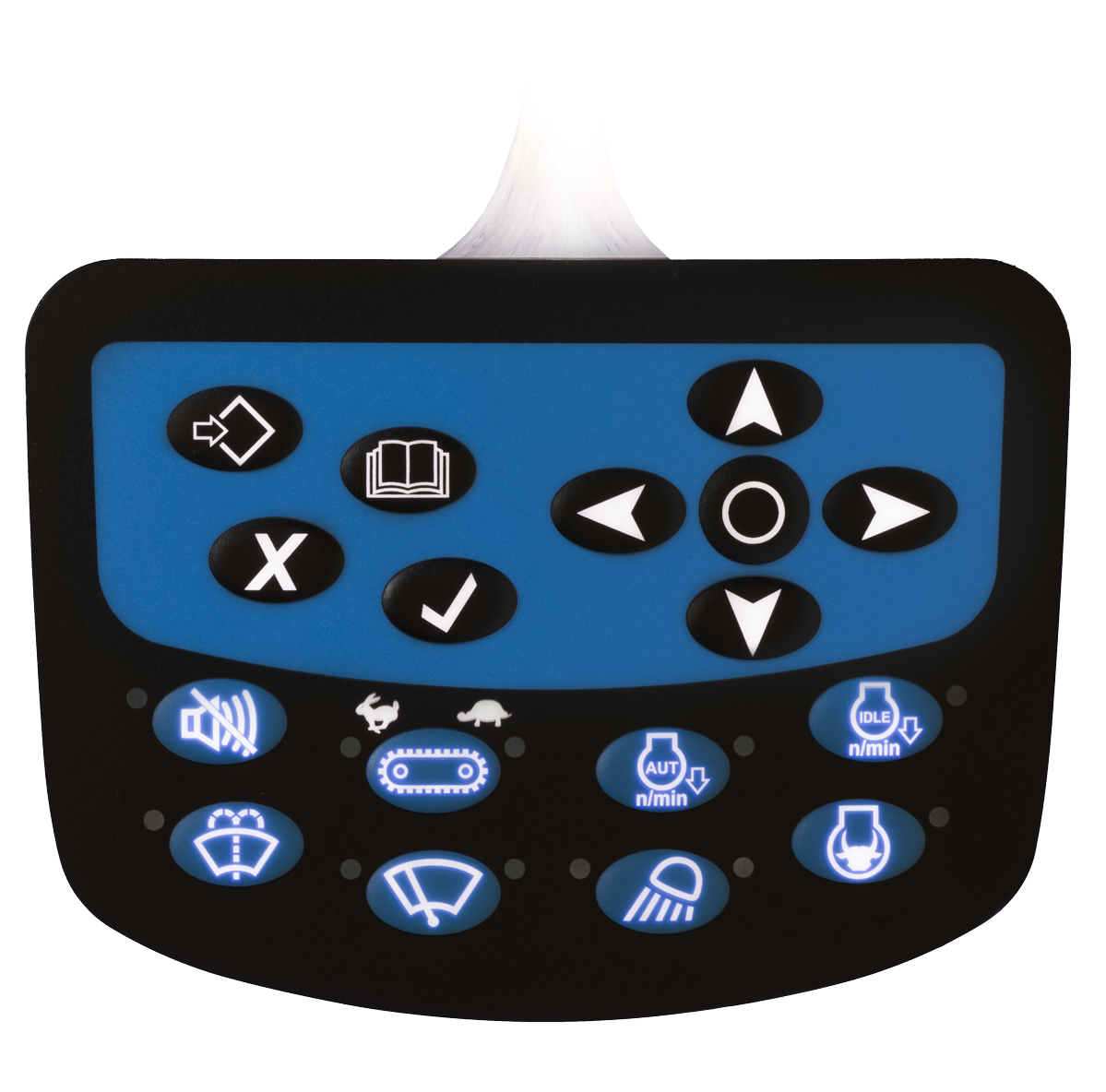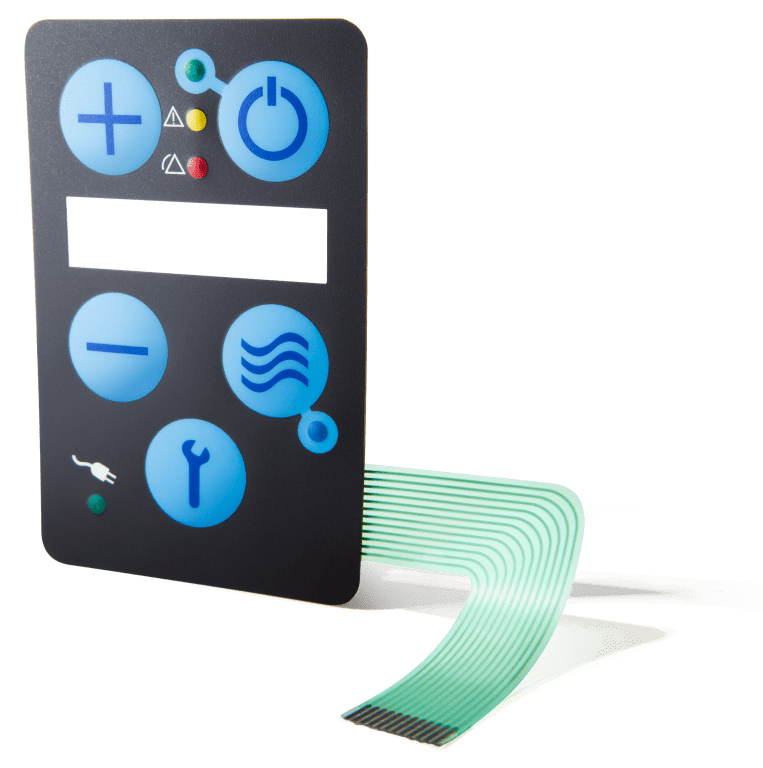Discover Exactly How Membrane Switches Feature and Their Function in Modern Electronics
Membrane Switches represent a sophisticated combination of innovation and style within the realm of modern-day electronics, functioning as important user interfaces in many gadgets. Included several layers, these switches make use of pressure-sensitive systems to help with user communication. Their applications cover various markets, from customer electronics to clinical equipment, highlighting their convenience and importance. Comprehending the ins and outs of Membrane switch capability and their more comprehensive implications in improving user experience welcomes additional expedition right into their design, advantages, and the innovative developments forming their future in technology.
What Are Membrane Buttons?

Membrane buttons are identified by their toughness and resistance to ecological factors, such as dust, moisture, and severe temperature levels. They can be tailored with various graphics, shades, and responsive comments alternatives, boosting customer experience while keeping aesthetic charm - membrane switches. Moreover, the unification of published circuits enables smooth integration right into tools, boosting total performance.
The flexibility of Membrane buttons is noticeable in their capacity to support both complex and simple control features. They can include attributes such as LED indications and touch-sensitive modern technology, accommodating certain customer needs. As modern technology proceeds to advance, Membrane Switches stay important for enabling reliable and user-friendly user interfaces, therefore playing a crucial duty in the improvement of modern digital gadgets.
Components of Membrane Switches
Membrane switches are composed of numerous essential components that interact to produce a useful and trusted user interface. The primary components include the visuals overlay, adhesive layer, spacer layer, and conductive traces.
The visuals overlay acts as the customer interface, usually published on a versatile substratum such as polyester or polycarbonate. This layer not only gives aesthetic allure but also consists of tactile responses, visual hints, and safety functions. Beneath the graphic overlay exists the glue layer, which secures the button to the device and makes sure durability against ecological tensions.
The spacer layer is critical for maintaining the needed void between the graphic overlay and the circuit layer. This space permits for the activation of the button when stress is applied. The conductive traces, typically made from silver or carbon, create the electric paths that complete the circuit when the button is engaged.
Furthermore, a support layer might be consisted of for architectural support and insulation. These components work together effortlessly, making sure that Membrane switches are both durable and easy to use, making them indispensable in various contemporary electronic applications.
How Membrane Switches Job
Just how Home Page do Membrane Switches function efficiently within electronic tools? Membrane Switches operate on the concepts of pressure-sensitive modern technology, making use of a layered building that includes visuals overlays, glue layers, and conductive aspects. When a customer uses stress to the button, the top layer deforms, allowing the conductive elements beneath to make call and finish an electrical circuit. This action triggers the wanted feature within the device.
The layout of Membrane switches is crucial for their reliable operation (membrane switches). The layers are meticulously crafted to supply tactile comments, longevity, and resistance to ecological elements such as dampness and dust. The inclusion of domes-- tiny, increased areas within the button-- enhances responsive reaction, providing individuals with a noticeable click experience upon activation
Furthermore, Membrane buttons can be personalized in regards to size, shape, and graphics, making them suitable for different applications. They are frequently made use of in control panels, medical tools, and customer electronic devices due to their streamlined design and dependability. Generally, the reliable functioning of Membrane buttons is essential in improving customer communication and guaranteeing smooth operation in modern-day electronic devices.

Applications in Modern Instruments
Utilizing their one-of-a-kind layout and functionality, Membrane switches have come to be integral components in a large range of modern electronic gadgets. These flexible interfaces are utilized in customer electronics, commercial devices, clinical gadgets, and automotive controls, giving smooth customer communication.
In customer electronic devices, Membrane buttons are commonly located in devices like microwaves, washing makers, and various other family gadgets, where they allow intuitive control with a smooth profile. Their low-profile style assists in combination into small tools, enhancing visual allure without endangering performance.
In commercial applications, Membrane Switches serve as control panels for equipment, using sturdiness and resistance to severe atmospheres. Their ability to withstand moisture and pollutants makes them perfect for use in production and processing markets.
Medical devices additionally take advantage of Membrane switches, which are designed to be very easy to clean and maintain, ensuring health in scientific settings. They are frequently made use of in analysis equipment, individual tracking systems, and mobile medical tools, where dependability is vital.
Advantages of Membrane Switches
Among the essential benefits of Membrane switches is their convenience, which enables them to be customized for a selection of applications throughout multiple markets. These switches can be created in different sizes and shapes, accommodating special product requirements while supplying seamless assimilation into tools. Their thin account allows a streamlined and compact layout, frequently boosting the aesthetic charm of electronic products.
One more considerable advantage is their toughness - membrane switches. Membrane buttons are generally immune to dirt, moisture, and chemicals, making them optimal for severe settings. This resilience extends their life expectancy news contrasted to standard mechanical buttons, decreasing the requirement for constant substitutes
Furthermore, Membrane Switches deal cost-effectiveness. The manufacturing process entails printing technologies that lessen manufacturing prices, particularly for large runs. This price, combined with low maintenance demands, makes them an eye-catching option for makers.

Verdict
In conclusion, Membrane Switches represent a substantial innovation in individual interface innovation within modern electronic devices. As the need for resilient and instinctive interfaces proceeds to expand, the function of Membrane buttons in shaping customer experience will unquestionably expand.
Membrane Switches stand for an advanced assimilation of modern technology and style within my latest blog post the realm of modern-day electronics, offering as important interfaces in many devices.In the world of modern electronics, Membrane Switches offer as vital components that assist in customer interaction with tools. As innovation proceeds to develop, Membrane Switches remain crucial for allowing instinctive and efficient individual interfaces, therefore playing a critical duty in the advancement of modern digital devices.
Just how do Membrane Switches function successfully within digital devices? Generally, the reliable functioning of Membrane buttons is crucial in enhancing individual interaction and ensuring seamless operation in contemporary digital tools.